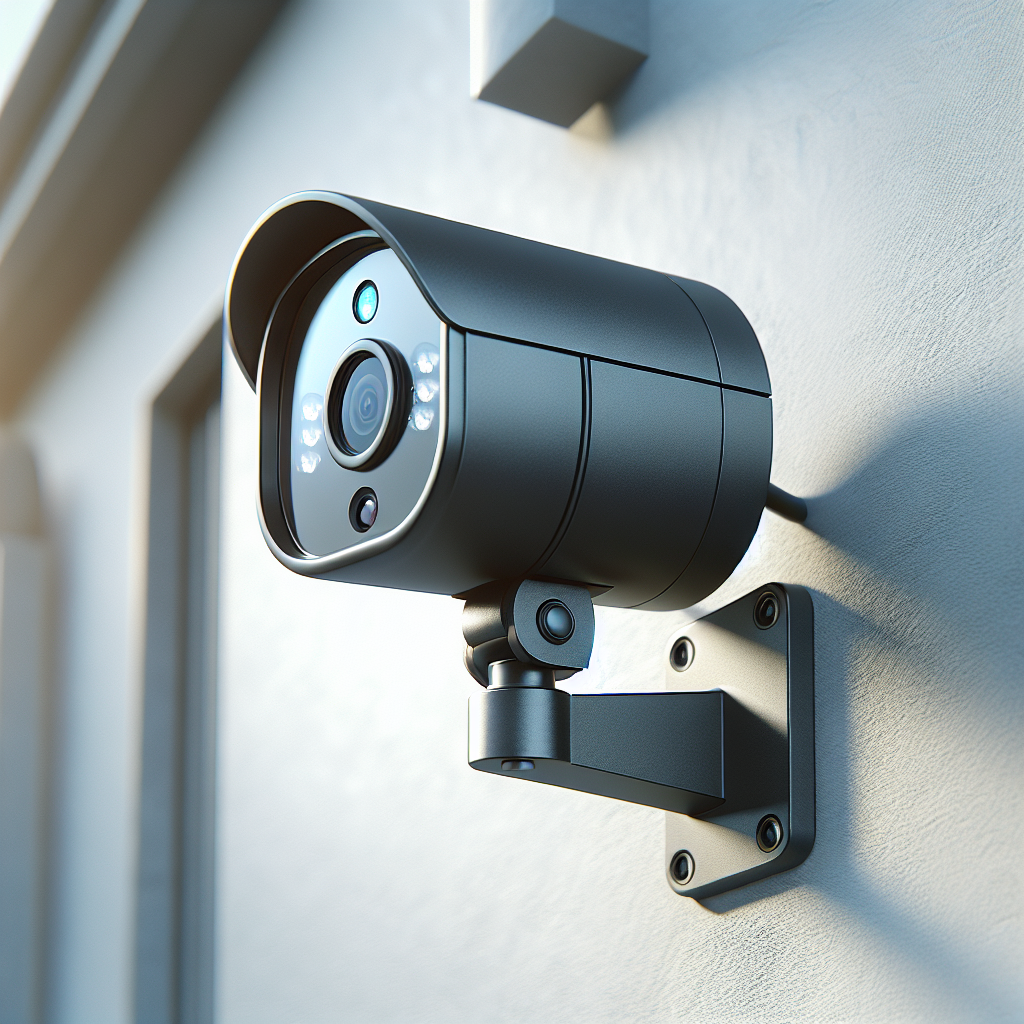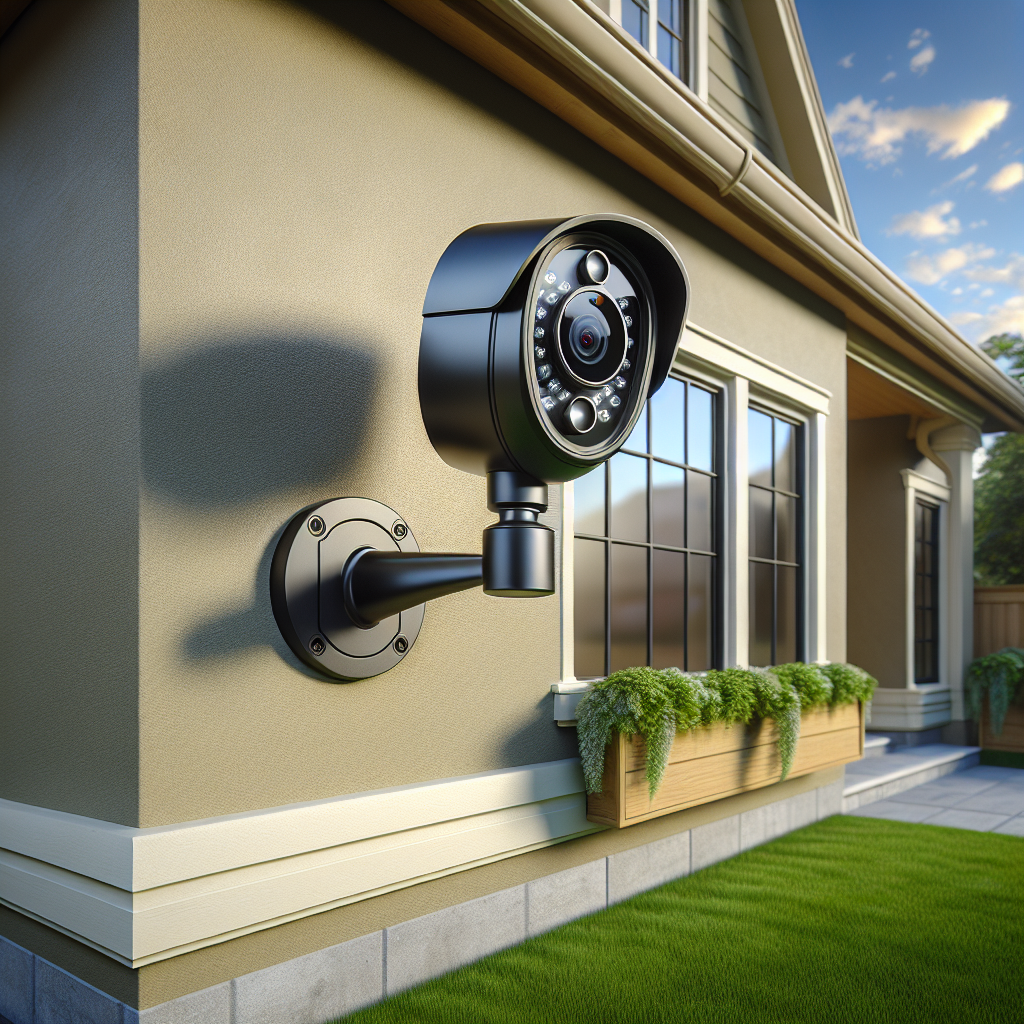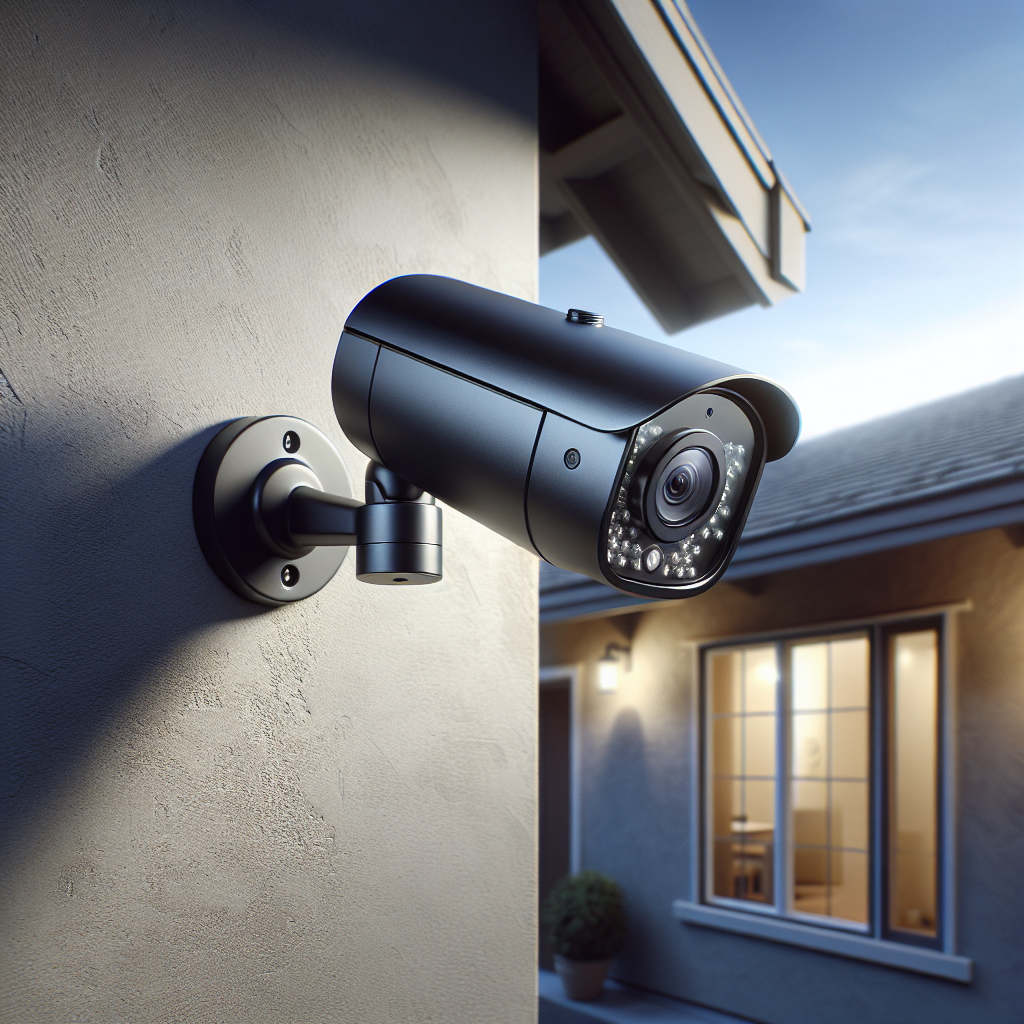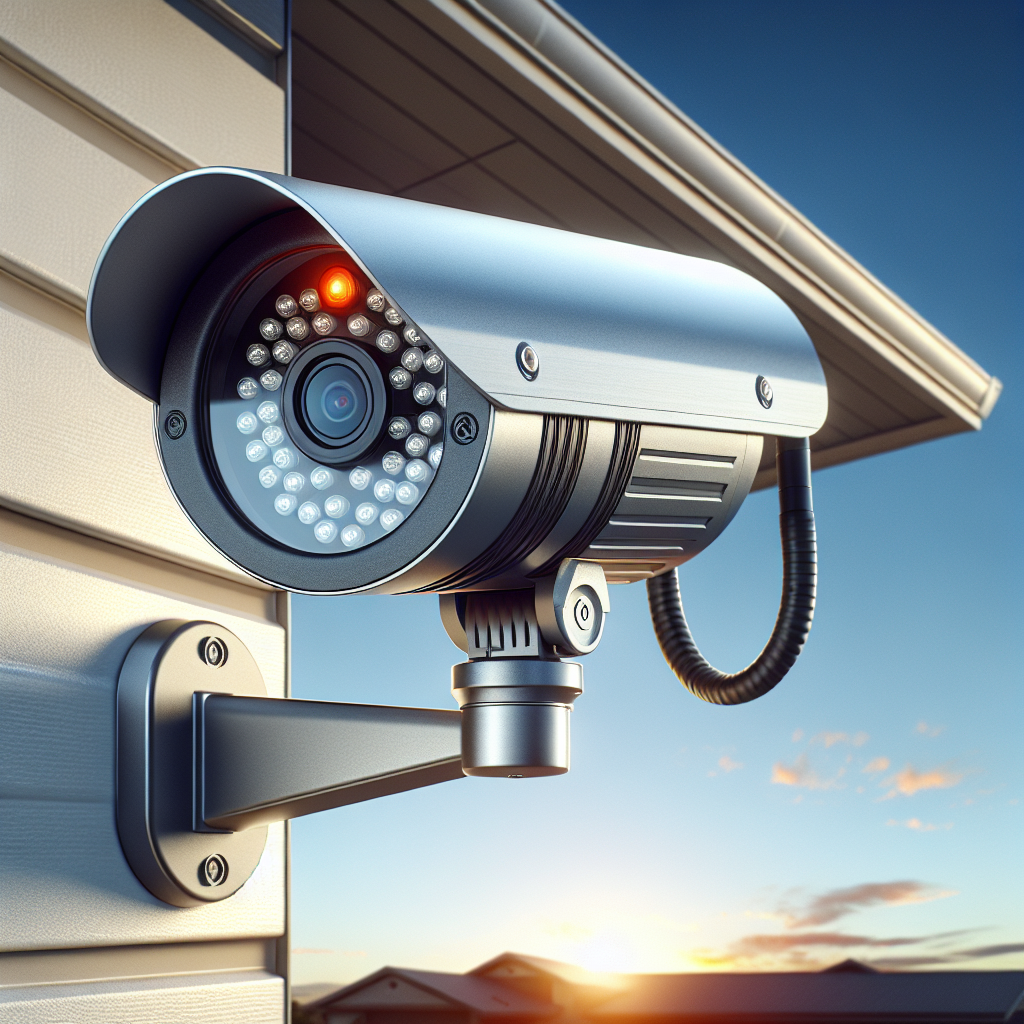Ensuring the safety of your home is a top priority for any homeowner. With the advancement of technology, home security camera systems have become a crucial tool in safeguarding your residence from potential threats. These systems not only deter criminal activity but also provide peace of mind through real-time surveillance of your property. Selecting the best home security camera system installation is about more than just purchasing high-quality cameras; it’s about creating a security strategy that encompasses camera selection, positioning, and maintenance for optimal protection and functionality.
To help guide you through this process, our team at Rapid Voice Data Solutions is dedicated to providing tailored solutions that align with your security needs. Whether you’re a tech-savvy homeowner or new to the world of home surveillance, we’re here to ensure that your security system is installed with precision and care. Visit our website to learn more and get started today! Click here.
In the following sections, we will delve into expert recommendations on how to choose the right cameras, strategically position them throughout your property, and maintain your system to ensure it remains effective over time. By understanding the key factors that contribute to a robust home security setup, you can make informed decisions that will keep your home and loved ones safe.
Selecting the Right Security Camera for Your Home

Selecting the right security camera is a foundational step in creating a robust home surveillance system. The market offers a plethora of options, each with its own set of features and capabilities. To determine the best home security camera system installation for your needs, consider factors such as camera resolution, field of view, and whether you require indoor, outdoor, or both types of cameras.
Resolution is critical as it determines the clarity of the footage. High-definition cameras, typically 1080p or higher, are recommended for clear, detailed images. The field of view is another important consideration; a wider angle gives you more coverage but may result in a fisheye effect, which can distort the image. A balance between wide coverage and image quality is ideal. Additionally, assess whether you need cameras with night vision capabilities for low-light conditions, and if you prefer wired or wireless setups.
For outdoor cameras, durability is key. Look for cameras rated for outdoor use with weather-resistant features to withstand the elements. Smart features such as motion detection, facial recognition, and integration with other home automation systems can enhance your home security camera system’s effectiveness. However, these features often come at a higher cost, so consider which functionalities are essential for your personal security strategy.
Remember, the best security camera for your home depends on your specific needs and the unique layout of your property. Carefully evaluating these aspects before making a purchase will ensure that you have a tailored and effective surveillance system in place.
Strategic Camera Placement for Maximum Coverage

Once you have selected the appropriate cameras, the next critical step is strategic camera placement to ensure maximum coverage and enhance the effectiveness of your security system. The goal is to cover as many entry points and areas of interest as possible without leaving any blind spots that could be exploited by intruders.
Begin by identifying the most vulnerable areas of your home, such as front and back doors, ground-floor windows, and garage areas. Position cameras to monitor these entry points directly. However, it’s not just about monitoring entryways; consider placing cameras in common areas like living rooms and hallways as well. These camera placements can help you keep track of the movement within your home, adding an extra layer of security.
It’s essential to mount cameras at an optimal height—too high, and you may not capture detailed images of faces; too low, and they might be tampered with or obstructed. A general rule of thumb is to place outdoor cameras 8-10 feet from the ground and angle them slightly downward for a clear view.
Furthermore, ensure that each camera has a clear line of sight. Obstacles like trees, decor, or architectural features should not obstruct the camera’s view. Additionally, be mindful of the sun’s position throughout the day; direct sunlight can cause glare and impact image quality. Consider using camera housings or shades to protect the lens and improve visibility.
Finally, leverage the features of your security cameras. If they have motion detection, make sure the motion zones are calibrated to ignore routine movements like passing cars or animals, reducing the likelihood of false alarms while still capturing relevant activity.
With thoughtful camera placement, you can create a comprehensive surveillance system that deters potential intruders and provides peace of mind knowing that your home is being monitored effectively.
Professional vs DIY Security Camera Installation
When it comes to the best home security camera system installation, homeowners often grapple with the decision between professional installation and a do-it-yourself (DIY) approach. Each option has its merits and considerations that should be carefully evaluated to meet individual needs and preferences.
Professional Installation offers the benefit of expert knowledge and experience. Technicians can assess your property’s specific security requirements and suggest the optimal placement of cameras. They are also well-versed in handling the complex wiring and connectivity issues that may arise, ensuring that your system is set up correctly and functions seamlessly. Moreover, many professional services include ongoing support and maintenance, providing added value and assistance after installation.
On the other hand, DIY Installation empowers homeowners with a more hands-on approach. It can be more cost-effective, as it eliminates labor costs and allows for a personalized setup. With the proliferation of user-friendly, wireless security camera systems, many homeowners find that installing and configuring their security system is more accessible than ever. However, a DIY approach requires a certain level of technical aptitude and may leave room for errors that could compromise the system’s effectiveness.
In choosing between professional or DIY installation, consider factors such as your technical skills, the complexity of the system being installed, and the time commitment required. It’s also important to think about the potential long-term benefits of a professionally installed system, such as warranty services and professional monitoring options, versus the satisfaction and savings of a successful DIY project.
Ultimately, whether you opt for the expertise of a professional installer or take on the challenge of setting up your system, ensuring that the installation is done correctly is paramount to the functionality and efficiency of your best home security camera system.
Ensuring Your Home Security System’s Reliability

Once the best home security camera system is installed, whether by a professional or as a DIY project, the focus shifts to ensuring its reliability. A security system is only as good as its operational integrity; therefore, maintaining consistent performance is crucial for the protection of your home.
To guarantee that your security cameras are always at the ready, regular maintenance is essential. This includes checking camera lenses for cleanliness, ensuring that there are no obstructions to the camera’s field of view, and verifying that the motion detectors are accurately calibrated. Additionally, for systems that record footage, it’s important to periodically review the storage devices to confirm that they are functioning properly and have adequate space available.
Another key aspect of reliability is the system’s power source. Wired systems must have secure and stable power connections, while wireless systems require routine battery checks and replacements. Moreover, with the advent of smart home technology, ensuring that your home’s Wi-Fi network is both robust and secure is also imperative. A strong network connection minimizes downtime and prevents potential vulnerabilities that could be exploited by cyber threats.
Software updates are another critical component, as manufacturers often release patches to improve system performance and address security flaws. Staying current with the latest firmware can help thwart hackers and keep your security system operating smoothly. Additionally, consider investing in a surge protector to safeguard your system against power surges that can cause damage to electronic components.
By actively managing these aspects, homeowners can bolster the dependability of their security system, providing peace of mind and ensuring that their residence remains under vigilant watch at all times.
Maintaining and Upgrading Your Security Camera System

Maintaining and upgrading your security camera system is vital to ensure that your home remains a safe haven. As technology advances, so do the capabilities of security cameras, which means staying updated with the latest enhancements can provide better protection and more sophisticated features.
Regular maintenance should be part of your routine to keep the best home security camera system installation in top condition. This includes checking the hardware for signs of wear and tear, testing the system’s functionality, and replacing outdated components. For instance, upgrading to higher resolution cameras can offer clearer images, making it easier to identify individuals or objects. Additionally, adding more cameras can expand coverage and eliminate blind spots around your property.
Upgrading software is just as important as hardware maintenance. New software versions often come with improved encryption methods and user-friendly interfaces. They may also enable compatibility with emerging smart home devices, allowing for seamless integration and centralized control of your home’s security features.
Furthermore, consider the advantage of professional support. Engaging experts for regular inspections can help detect issues that may not be obvious to the untrained eye, ensuring that your system remains reliable and effective. If you’re considering an upgrade or simply wish to ensure that your current system is functioning optimally, visit our website to learn more and get started today! Click here.
Remember, a well-maintained and regularly upgraded security camera system not only provides enhanced protection but also adds value to your property. It’s an investment in your safety and peace of mind. Don’t wait until it’s too late; take a proactive approach to your home’s security. Visit our website to learn more and get started today! Click here.

